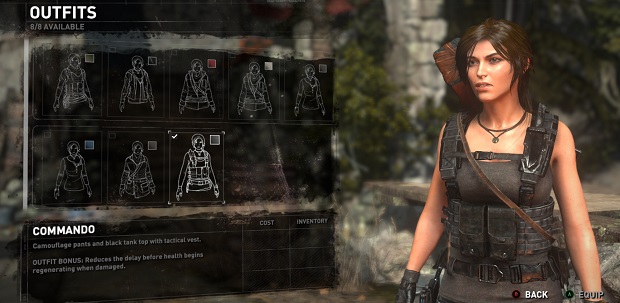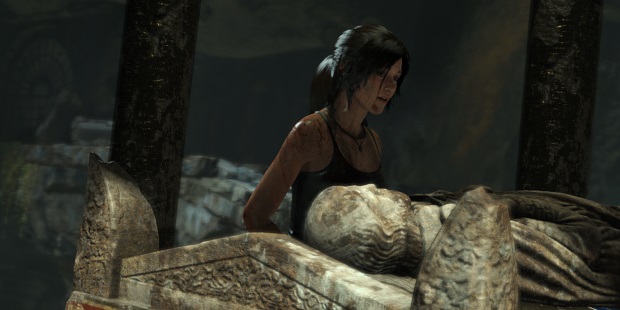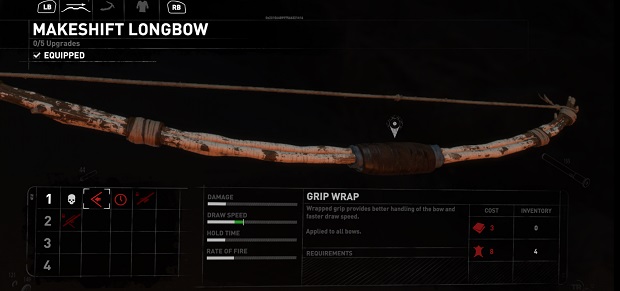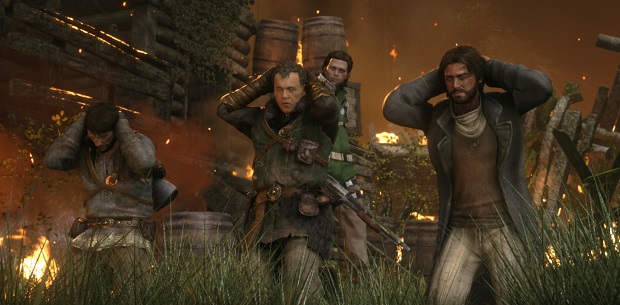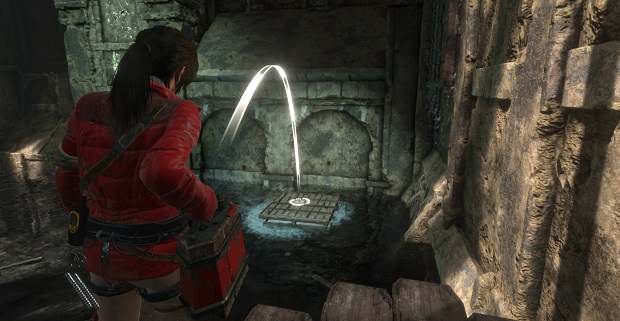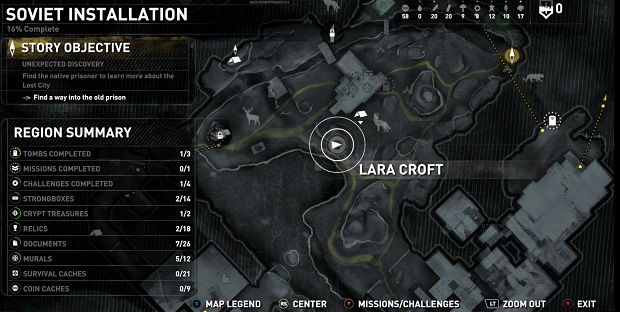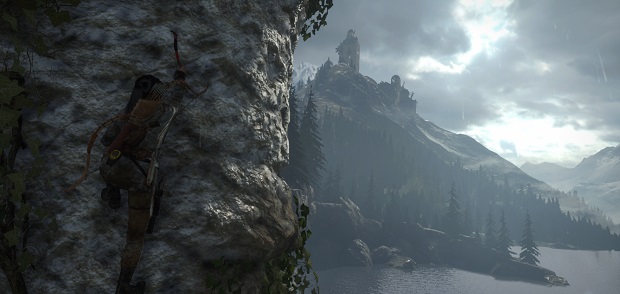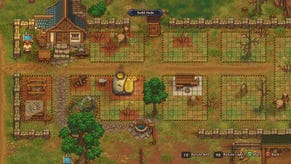Wot I Think: Rise Of The Tomb Raider
Art and Croft
Rise of the Tomb Raider [official site] expands on and improves the core pillars of the series' 2013 reboot. What it doesn't do is change the formula significantly. Lara Croft is still a young woman and we're witnessing the process by which she will become the titular crypt corrupter. As in the previous game, she's soon stranded in an unwelcoming environment with little in the way of equipment and no network of support. Over the next twenty hours or so, you'll guide her from branch-gathering and hide-hunting to full-on military engagements and supernatural shenanigans. Here's wot I think.
I've enjoyed playing Rise. In fact, I've been enjoying it so much that I didn't do the sensible thing and rush through the plot so that I could write my review quickly. I scoured the two major hub areas for hidden tombs and trinkets, and I leveled up Lara's language skills until I could read every scrap of parchment and monolithic signpost in the game. Crystal Dynamics have made a world that I want to scour, mostly to see all of the fine details and lovely artifacts rather than to harvest upgrades and experience points.
If you haven't been following the pre-release (and post Xbone-release) press, you might be slightly confused about the notion of “leveling up language skills”. By reading documents written in various languages, Lara increases her understanding of that particular language, meaning she can read trickier murals and the like later in the game. It's a preposterous idea that works well enough if you simply accept that she's piecing together pieces of very specific isolated idiosyncratic variants based on language groups she already understands perfectly.
That's not how the game frames it and one of the languages is simply Russian, Soviet-era, which doesn't fit in with the idea of isolated variants. But it's typical of the game's slightly confused collection of elements, that sense of having to accommodate ridiculous ideas into a framework that leans heavily on graphical fidelity and a realist approach to this kind of action-adventure.
The survivalist streak is at the heart of that. Tomb Raider didn't convince me that the gritty hunter-gatherer approach would ever fit comfortably with the more awe-inspiring and shooty-kill elements of the series. Rise doesn't do anything to persuade me otherwise. Early in the game, you're starring in The Revenant, bear attack and all. Kill that bear and you've got a hide that you might go toward that ammo pouch you've always wanted.
You'll gather wood and feathers to make arrows, and crouch by campfires. I shivered in sympathy such is the quality of the animations that communicate Lara's misery. She limps, stumbles, drags herself along the floor, cowers and flinches. There's not quite as much suffering as in the 2013 game, which added the horror of Lara's First Murder to the pile, but movements through hazardous and claustrophobic environments are wince-inducing.
Again, the astonishing craft that has gone into making Lara act (and react) like an actual human being is at odds with the cartoonish nature of the trials she survives. Nearly killed by the weather one day, the next she's absorbing bullets and bouncing off frozen cliff faces as she tumbles toward the game's climax. For all the collectible distractions and possibilities to slow the pace in the hub areas, Rise is a game of forward momentum. Lara stumbles into trouble and keeps on running and gunning until she gets to the other side.
Thankfully, the running and gunning is a damn sight better this time around. There are plenty of opportunities to sneak through groups of enemies, perhaps striking from the shadows (or stealth bushes) as you go. I've also enjoyed crafting explosives and molotovs mid-combat, grabbing bits of tat from the vicinity and converting them into improvised weapons. I could do without the armoured infantry that show up later on because they're both frustrating to fight and another example of that clash between the game's fidelity and its actual mechanics. But I'm at peace with the extensive firefights, which eventually drove me away from the reboot. I'd still rather spend my time solving environmental puzzles and raiding tombs, and the combat occurs at intervals that are too predictable, but I'm not entirely dismayed when the shooting starts.
And, yes, there are more tombs to raid this time around. Even some of the main plotlines focus on big ol' underground chambers and the puzzles therein. There are three types of location to discover in the hubs – caves, crypts and tombs. They're essentially tiers, with caves at the bottom, providing a few basic resources and, often enough, a fight with an animal or pack of animals. Crypts contain relics and run a little deeper underground. Tombs contain a central puzzle and some delightful and varied scenery to gawp at.
The best of the tombs are the ones concealed within the world. You'll see what appears to be an incidental background detail, a ruined tower or cleft in a cliff, and think nothing of it. Try to get closer though and the telltale sound of chimes informs you that there's an entrance nearby. So does the big ol' tooltip that appears on the screen, sadly, but it's possible to make your way toward many of the tombs before the pointers appear.
In terms of puzzles, there's generally one per tomb. These are not gargantuan structure. Or at least, the're not gargantuan in the sense that they contain elaborate machinery. You'll cause water levels to rise and fall, and move crates from one place to another. Mostly, the puzzles are about moving from one part of a room to another, using machinery and movable elements to create a path. They're satisfying, never overly challenging, and tied to a single solution.
What's disappointing is how little they draw from the stunning backdrops. Some of the locations are absolutely beautiful, with a sense of scale that's lacking in the main areas of the game. Whatever set dressing makes up the tomb, it rarely informs the design of the actual playable area though, which is a shame.
There's a faint Metroidvania vibe, with some tombs only explorable once mid- and late-game equipment has been unlocked. That mostly affects the entrances though, which I appreciated. You won't find yourself in an unsolveable room because it'll be impossible to enter unless you have all the tools you need to progress once you're inside.
If you were truly devoted to the game, you'd be able to unlock loads of different weapons (often found piecemeal, hidden in locked containers), every skill on the three separate trees (they're often buffs for abilities rather than entirely new ones) and carry enough ammunition to wage a war. And on the latter point, the disappointing truth is that you will have to wage a war. There are tombs and there are artifacts, yes, but the central story becomes one of resistance and guerrilla warfare rather than discovery and awe.
That shift didn't work for me and nor did the majority of the plot beats, which repeat the previous game's structure far too neatly. There's some fun reworking of the legend of Kitezh, which is the game's central 'treasure', but the people of the Prophet who take on the role of noble native have all the comfortable tattooed ethnicity of a gang of backpackers who've decided to form a commune. They're predictably dull, which leaves Lara's reaction to them and the spiritual/supernatural revelations to carry most of the weight.
She's a likeable character on the whole, though burdened with many of the father issues that might have worked as a cross on Indy's shoulders if The Last Crusade hadn't actually introduced Jones Sr. And if it hadn't had a sense of humour. As the final credits rolled, it's a sense of fun or joy that I felt the game had lacked.
There's very little to laugh about in Rise of the Tomb Raider. This is serious business - magical artifacts, hammy villains, super-secret high-tech military organisations and all – and even when there's a discovery worthy of wild celebration, the response is muted because of all that serious business. And because people are being massacred left, right and centre.
Story-wise, Rise continues on the reboot's path of touching on ideas about invading powers stealing and destroying cultural artifacts, and indeed entire cultures. Less, “It belongs in a museum” and more “We don't belong here at all, our museums are big theft-vaults, and we should leave the quiet corners of the world well alone”. Lara is driven to explore and expose though, which leads to a conflict between the post-colonial awareness that culture cannot be appropriated and placed in a box, and the actual essence of tomb raiding.
In the end, the story fails to reconcile the character's various ambitions, and after all the questioning is done and the piles of bodies have been swept away, the necessity of people like the Crofts – rich outsiders who push and probe – remains. They are the new enlightenment, bringing their knowledge (and thirst for more knowledge) to the hidden parts of the world, only bothering to check if there's a good reason to be hidden after the fact.
I'm not convinced any of that matters. All of the individual elements are enjoyable and much-improved. But the game certainly thinks that the story matters and it eventually becomes detrimental. When it comes to the shooting, the exploration and the collecting, however, Rise of the Tomb Raider is extremely accomplished. It's also a gorgeous game, one that does both the bigger environmental shots and the exquisite details well. On a PC capable of pushing it to its highest settings (and it covers a wide range of machines thanks to a decent set of visual options), it's one of the most attractive games I've ever seen. I wish there were more variety in the locations to show off the splendor of the engine and art design.
This is not a globe-trotting game and that's another part of the stranded survivalism that I find irritating - you're trapped in a single location for most of the running time, though it is a location with an explicable change of climate midway through the game. It's not all snow and ice.
By the muddy, bloody end I was dreaming of the globe-trotting escapades of Uncharted. Drake and co might be too smug and convinced of their own charms, but I enjoy their company. Lara's likeable when she's facing preposterous odds and taking down mercenary armies with a snarl of defiance, but as soon as the action slows down and she starts to look inward, she doesn't even seem to enjoy her own company.
Rise is a strong and confident step forward for the new series, but I'm still unconvinced it's heading in a direction that I particularly like. This new Lara Croft is in danger of becoming a character constantly in the act of becoming something with no clear idea of how to portray that thing once she arrives. When all of the rising was done, she still felt like a heroine in search of a setting and plot that draw on her strengths rather than her struggles, and for all that forward momentum the game is a spectacular journey that fails to reach a fulfilling destination.
Rise of the Tomb Raider is out tomorrow for Windows.


